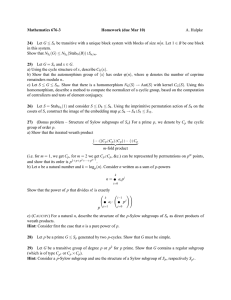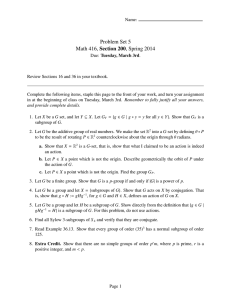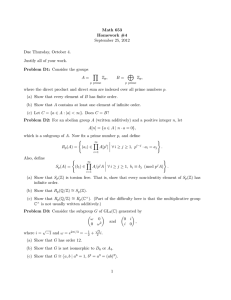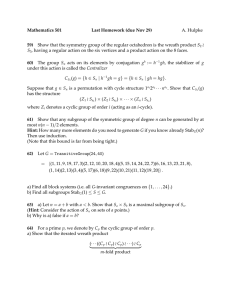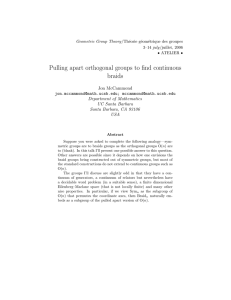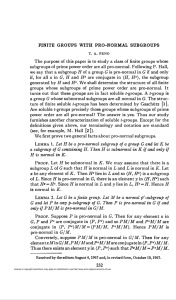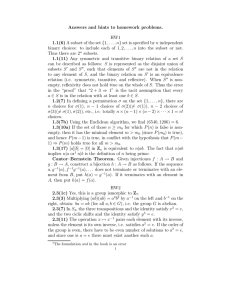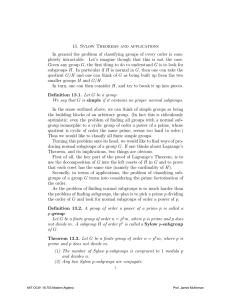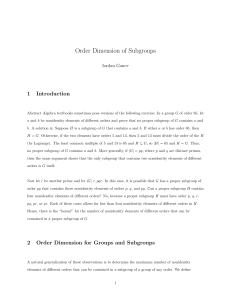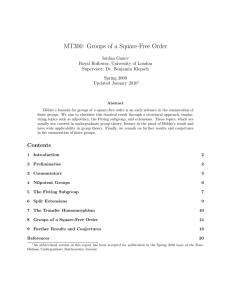Mathematics 567 Homework (due Feb 21) 18) A. Hulpke
advertisement
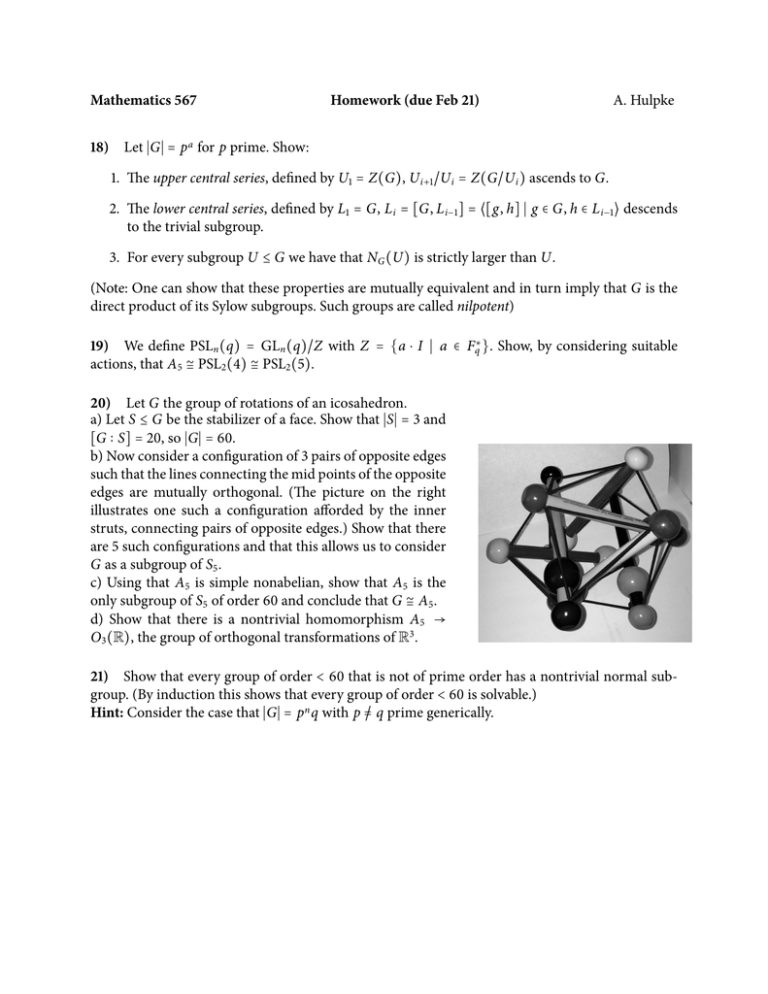
Mathematics 567
Homework (due Feb 21)
A. Hulpke
18) Let ∣G∣ = p a for p prime. Show:
1. The upper central series, defined by U1 = Z(G), U i+1 /U i = Z(G/U i ) ascends to G.
2. The lower central series, defined by L1 = G, L i = [G, L i−1 ] = ⟨[g, h] ∣ g ∈ G, h ∈ L i−1 ⟩ descends
to the trivial subgroup.
3. For every subgroup U ≤ G we have that NG (U) is strictly larger than U.
(Note: One can show that these properties are mutually equivalent and in turn imply that G is the
direct product of its Sylow subgroups. Such groups are called nilpotent)
19) We define PSLn (q) = GLn (q)/Z with Z = {a ⋅ I ∣ a ∈ Fq∗ }. Show, by considering suitable
actions, that A5 ≅ PSL2 (4) ≅ PSL2 (5).
20) Let G the group of rotations of an icosahedron.
a) Let S ≤ G be the stabilizer of a face. Show that ∣S∣ = 3 and
[G ∶ S] = 20, so ∣G∣ = 60.
b) Now consider a configuration of 3 pairs of opposite edges
such that the lines connecting the mid points of the opposite
edges are mutually orthogonal. (The picture on the right
illustrates one such a configuration afforded by the inner
struts, connecting pairs of opposite edges.) Show that there
are 5 such configurations and that this allows us to consider
G as a subgroup of S5 .
c) Using that A5 is simple nonabelian, show that A5 is the
only subgroup of S5 of order 60 and conclude that G ≅ A5 .
d) Show that there is a nontrivial homomorphism A5 →
O3 (R), the group of orthogonal transformations of R3 .
21) Show that every group of order < 60 that is not of prime order has a nontrivial normal subgroup. (By induction this shows that every group of order < 60 is solvable.)
Hint: Consider the case that ∣G∣ = pn q with p =/ q prime generically.


